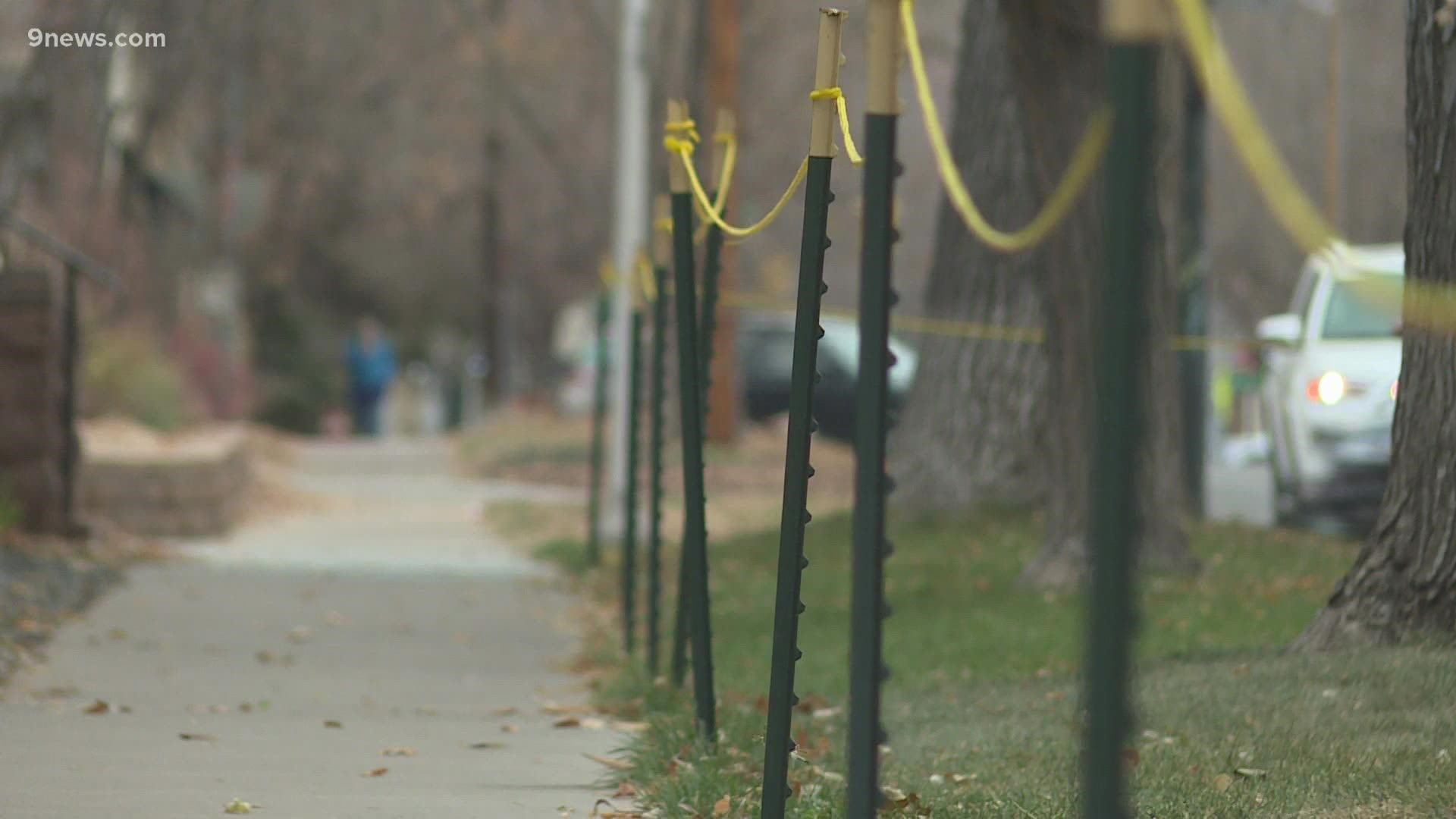DENVER — Neighborhood rights-of-way have a funny name.
You and your neighbors do not really have the right to get your way.
Rights-of-way are the area between the street and the sidewalk. They are usually grassy, sometimes with trees, and in Denver, increasingly filled with homeless encampments.
Residents of Capitol Hill near downtown Denver have decided to make some of the public rights-of-ways, not so public.
Many of the tree lawn areas in between the curb and the sidewalk have temporary fencing, rope or caution tape put up, but not by the city.
"I think it's kind of uglier than the actual tents that would be put up here," said Capitol Hill resident Madelynn Smith. "They could be living here, instead there's ugly tape."
The not-so-subtle secret that Smith sees is an unwelcome message for those experiencing homelessness.
"They're putting it up everywhere over Cap Hill. It's kind of gross," said Smith. "They're like go somewhere else. But where are they going to go? They have like nowhere to live."
"This just came up in a conversation that I had with the city earlier this week concerning our residents' concerns around what they're calling hostile landscaping, hostile architecture," said Travis Leiker, president of Capitol Hill United Neighborhoods.
As head of the registered neighborhood organization, Leiker met with city leaders this week about the Capitol Hill rights-of-way.
"Folks are concerned with and responding to unsanctioned encampments," said Leiker "What you see is a number of private property owners trying to triage what they think is a concern, or an issue, in terms of public right-of-way enforcement."
At the corner of 10th Avenue and Pennsylvania Street, three of the corners are blocked off. Two of the corners have rights-of-way blocked with fencing put up by nearby residents. A third corner is a city park, which has been closed and fenced off. The fourth corner has open space in the right-of-way.
"We're having a hard time finding who's following the proper permitting course of activities," said Leiker.
At 10th Avenue and Emerson Street, a right-of-way next to a townhome complex has a rope line blocking the center of the right-of-way. A tree in the public right-of-way has a "No Trespassing" sign attached to it.
"It's not something you should be doing, putting a 'no trespassing' sign on a tree," said Leiker.
Next with Kyle Clark provided Denver's Department of Transportation and Infrastructure (DOTI) a list of addresses and intersections where temporary fencing, tape or rope were put up in the public right-of-way.
The city could find no permits issued for those areas.
"We haven't taken a firm stance in terms of right-of-way, but what our position is, is follow the rules," said Leiker.
So what about enforcement? Will the city take down the fences where permits are not issued?
In an email, a DOTI spokeswoman said, "as we can free up a right-of-way inspector to visit these locations, we will follow up. If the adjacent property owner is growing grass or landscaping, we will ask them to get a permit. If not, we’ll ask them to take the fencing down."
SUGGESTED VIDEOS: Full Episodes of Next with Kyle Clark

